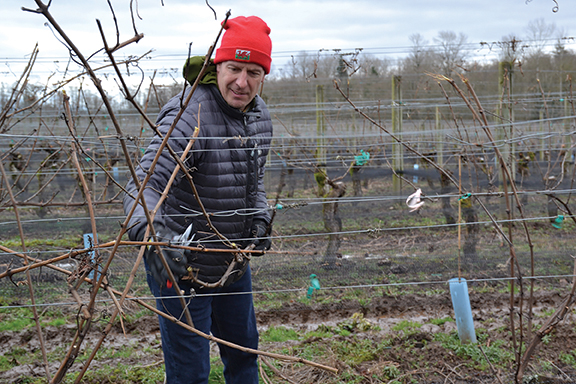LANGLEY – Close to 30 grape growers in the Lower Mainland attended the BC Grapegrowers’ Association’s first workshop outside the Okanagan on January 21.
The session, held at Chaberton Estate Winery in Langley, included a safety discussion and hands-on pruning workshop.
Township 7 winemaker Mary McDermott notes events like this are needed in Langley because of the region’s growing winemaking industry.
“There’s a lot of new people entering the business here in Langley, so it’s good to have as much education as possible,” she says. “It’s good to have the community come together with the Okanagan.”
She adds that the experience of local growers provides an opportunity for newcomers and established players in the industry to learn from each other.
“The Fraser Valley is going to be the next up and coming wine region,” says Chaberton’s assistant vineyard manager Maddi Pantlin. She says climate change is helping the industry. “We’re already seeing some red grapes starting to ripen here.”
As the largest and oldest winery in the Fraser Valley, Chaberton was a natural host for the event.
“We have an actual estate licence,” she says. “We are primarily white [grapes] here; we have nine varietals.”
In his pruning presentation, Graham O’Rourke, viticulturist and co-owner of Tightrope Winery in Penticton, explained that everything done in the vineyard should be done with the future wine in mind – even pruning.
“Ask your winery what they want,” he told growers.
O’Rourke said that in the Okanagan, pruning sessions are primarily concerned with winter injury, bud damage and pruning at -9° Celsius. These aren’t the concerns of Lower Mainland growers.
“Down here, there’s more hybrids. Very winter-hardy, but there’s no winter,” he says. “There’s more powdery mildew, so cane pruning would help.”
He added that there are fewer and different insect pressures in the Lower Mainland and more water leaching. Pruning can help with both of these issues as well.
Doing one job at a time was another recommendation meaning that pruning should be done in one pass of the vines and tying in another.
In a presentation about the prevention of musculoskeletal injuries, AgSafe safety advisor Barb Friesen says everything in the vineyard is a risk factor due to the equipment used, repetitive motions and awkward positions required to get the work done.
“We all have the same goal; to go home safe at the end of the day,” she says. “We have to always look at the job and the person. Everybody is different.”
She advises vineyard owners and managers to look at the potential cost of injuries (paid time off, medical expenses, WorkSafeBC fee increases) when considering a tool or device to reduce risks. When the potential costs are weighed, the replacement item may become much more affordable.
“Do your warm up exercises and stretches,” she advises. “Take micro-breaks.”


 BC potato growers optimistic
BC potato growers optimistic